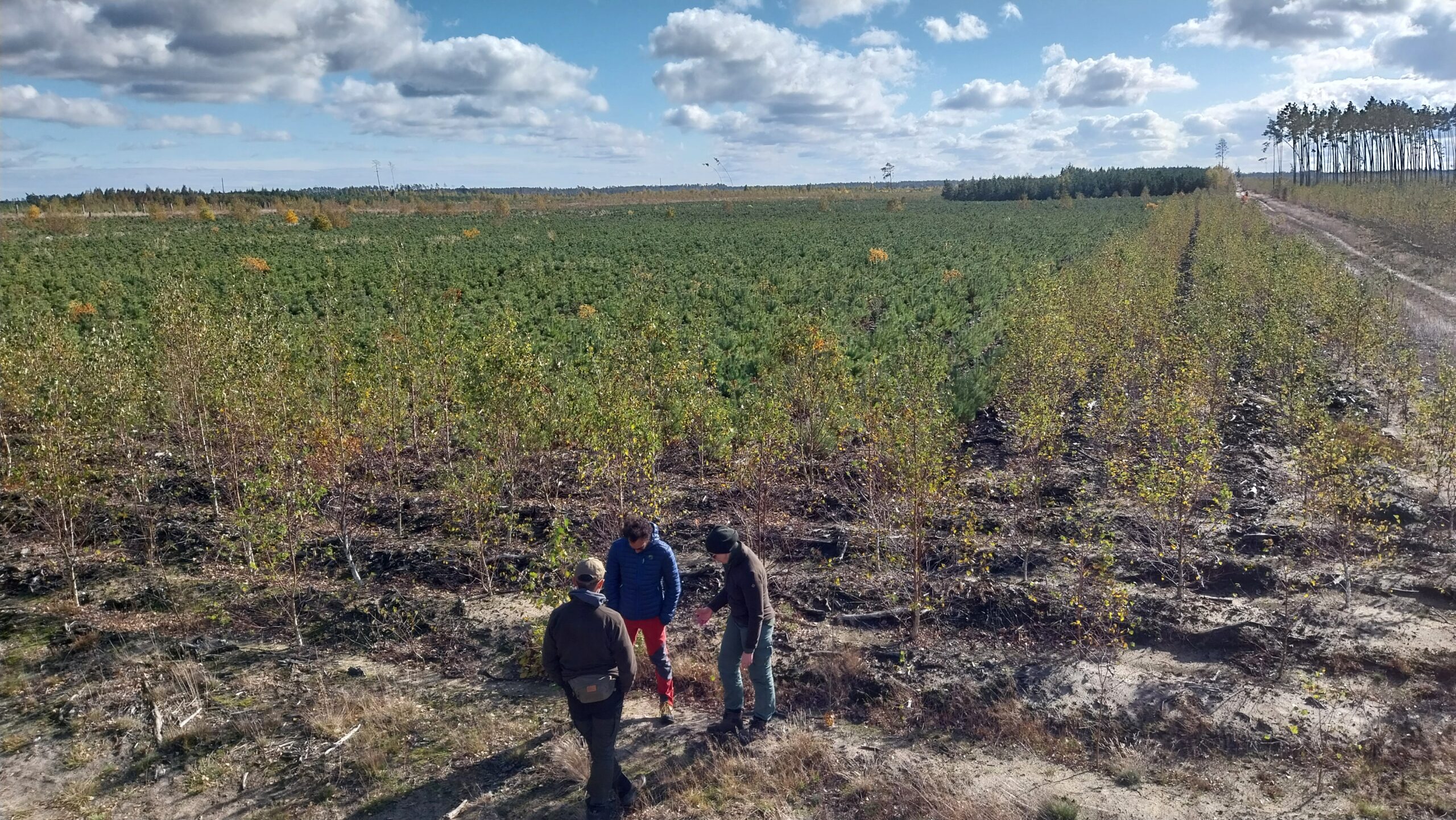In 2017, after the windthrow event, 39 harvesters, 34 forwarders and 27 other forestry machines were used to process the damaged timber. In 2018, one year after the event, 95 forestry machines were still working in the forest area of the Rytel Forest District. In addition to natural regeneration, approximately 44 million trees were planted. Most of the seedlings were Scots pine (Pinus sylvestris), but 7 million oaks (Quercus pertraea, Quercus robur) and 4 million other species such as birch (Betula pendula), beech (Fagus sylvatica), lime (Tilia spp.), maple (Acer spp.), hornbeam (Carpinus betulus) and many more were also planted. The sheer number of seedlings required was a challenge for the foresters, firstly because the trees were planted by hand, requiring a lot of manpower, and secondly because the local nurseries couldn’t supply such a large number of seedlings. Fire safety issues were considered during the reforestation. Fire buffer zones were created by planting deciduous trees and a network of firebreaks was created. The forest managers anticipate future problems due to game browsing and bark stripping. Hunting in such a large area is a big challenge for hunters. However, the presence of wild wolves in the area may help to control the game population. During reforestation, forest researchers have established several experimental plots. We visited two different research areas. In the first plot, different methods of artificial regeneration of Scots pine are being tested. Bareroot and container seedlings were planted in autumn 2022 and spring 2023, resulting in four different treatments to compare. Unfortunately, the trees on this plot were too young to get any results. The first measurements of the trees will be carried out soon. The second trial we visited aims to test different tending methods. Naturally regenerated birch is a major competitor and often obstructs planted Scots pine in its early development. Different regimes of birch removal are being tested in this area. Four different treatments were applied: a reduction of 100 % of birch, a partial reduction leaving 20 accompanying individuals per hectare, a partial reduction leaving 100 accompanying individuals per hectare, and a control variant with no treatment. The partial reduction was implemented to observe possible positive ecological effects without compromising the objectives of timber production too much. The treatment was carried out a few weeks before the visit, so that the area was easily accessible, and the treatments could be compared visually. The untreated plots were particularly interesting, as competition between Scots pine and birch could already be observed on these areas. Long term monitoring is needed to obtain more detailed information on the effects of the different treatments.
Written by Stefan Ebner
